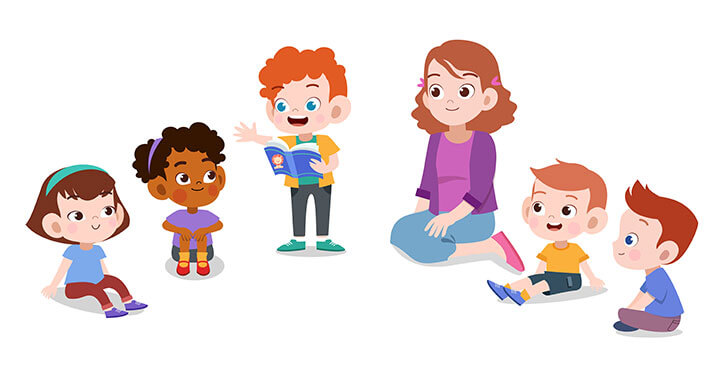Is there a mandate for inclusion?
The World Conference on Special Education Needs Education: Access and Quality was held in Salamanca, Spain on June 7-10, 1994. More than three hundred (300) participants representing ninety-two (92) governments and twenty-five (25) international organizations met to further the objective of education for all by considering the fundamental policy shifts required to promote the approach of inclusion (The Salamanca Statement Framework of Action in Special Education, 1994). The Philippines is a signatory to the Salamanca Statement.

Why Learning and Beyond Childcare Intervention Center, Inc. chose Inclusion when segregated Sped or a Regular school is administratively more convenient.

In 2011, when Miss Salomon finished her Masters in Special Education at Philippine Normal University she decided to put up her own tutorial center called AACLP Tutorial and Sped Training Center. AACLP was a tutorial center for children both regular and special who needed academic assistance. It also uses a training center for teachers who were interested to have an enrichment training for instructional materials making and the execution of effective teaching strategies. Miss Salomon’s dedication and passion in teaching marked a good impression to most of her professors at the Philippine Normal University, Manila. DepEd graduate scholars from Philippine Normal University frequented and observed the center.
In 2013, AACLP Tutorial Center and Sped Training Center changed its name to Learning and Beyond Childcare and Intervention Center. It is presently a center that focuses on both regular children and children with special needs in a small group class. Before the inclusion program was even recognized and implemented in the Philippines, unawaringly, LABCICI was already doing it with their pre-school classes. When we started accommodating children with special needs, we had the initial impression to present to them a natural and a healthy environment where everyone is accepted as a unique individual or as unique as they are. One does not need to be called as special merely because of their special needs. Everyone is treated as special because everyone is created unique and special. Regular children should likewise be handled with special care believing that they, too, have special needs though not visible. We give special treatment not because of the need but because that is what is right and fair.
The name Learning and Beyond was conceptualized because there are far greater things than learning. It is beyond words that we can use to describe it: full of hope, love, compassion, kindness, understanding. Beyond words, simply, beyond words. Our logo which depicts of the sun, people, and even the rainbow lettering reflects hope, teacher/family and peers and the support system. support. The colors of the rainbow speak of the limitless opportunities available to learning. Going to school is the right of every child ultimately and so is learning. The failure to pass the academic standards, the inability to receive process and follow instructions, the difficulty in the expressing of oneself, the having intellectual or physical impairment, history of academic failure, being at risk in education are not reasons to discriminate nor be the basis to deny a child enrolment in a school. This advocacy includes the gifted, the fast learners along with those with high motivation to learn. This strong concern for children with diverse abilities and characteristics makes Learning and Beyond an early advocate for the zero reject policy policy on school admission.
It is true and factual that if we continue the traditional placement options of separating students with special needs from those without impairments, our lives as educators will become easier. But is that what we want? to discriminate making the learners feel that some can either be superior or inferior compared to the others? As we desire to make a difference and to make a change in the lives of our diverse learners, it is imperative that we stick to our philosophy and work in accordance to what we believe in by helping them be part of a small community in school. Schools ought not to perpetuate segregation.


Special Education is good education, so why modify the set up?
What the present program wishes to do is to continue accepting not just children with different abilities and regular children but to also accept and cater to those children who were negatively affected by the pandemic during lockdown in regardless of their age group. As Abigail A. Allen said in July 2022 in an article she wrote Pandemic Babies are Facing Speech & Social Development Delays 5 Ways to Help. “Typically, about 1 in 6 children experience a developmental delay. But children born during the pandemic, a 2022 study has found, have nearly twice the risk of developmental delays in communication and social development compared to babies born prior to the pandemic.”
It is with utmost desire that our center be recognized and be known for its unique school-readiness program with which our center has shown excellence for the past years. In doing so, we can showcase our best practices and be a model for other pre-schools who may wish to likewise offer inclusive education to children from 0 to 4 ½ ages.
We have the mandate. The choice when and how to start inclusion is left to us.
In an inclusive set-up, regular children and children with special needs are at times grouped together for lesson presentations. Children are encouraged to work together as a team. This activity empowers the regular ones to have compassion in their dealings with their classmates. And at the same time, the children with special needs can feel the support and love expressed by their classmates. If children, both regular and with special needs, are exposed to this kind of friendly environment at an early age, they can be assured of a healthier environment and a productive life in their growth. Young minds can help bridge the gap. If children of this new generation develop love and compassion, chances are there will no longer be discrimination nor segregation in the next generation. Gap bridging happens only when both learners (regular and cwsn (children with special needs) agree to help each other. The school is the best environment that can breed the future generation that can carry out the change.
What does inclusion mean?
- All children with learning needs (CLN) are included in all subject and activities.
- Learner enrollees in the middle of the school year are placed on a one-on-one program to establish actual classroom routines and orientation of rules and for group readiness program.
- All are included in school activities regardless of the nature or severity of the disability.

Inclusive Education/Inclusion: For All, School, Community, City and the State
What do we expect from inclusive classrooms?
- Varied avenues for learning
- An extensive collection of various instructional materials for different subject areas.
- Modified lesson concepts through active hands-on materials for easy understanding
- One-on-one instruction through peer-teaching, enhancing leadership skills and socialization.

After the circle time, children proceed to their assigned task for the day with a differentiated instruction depending on each child’s learning style. The teacher, as the facilitator of the class, directs the children to their assigned tasks using the self correcting materials with minimal assistance for the day; while others who may need full assistance will work side by side with their teacher. Others may form small groups of five (5) doing peer teaching activities like art activities or building blocks or work with materials that they choose.
Students who provided peer supports for students with disabilities in general education classrooms demonstrated positive academic outcomes, such as increased academic achievement, assignment completion, and classroom participation. (Cushing & Kennedy, 1997)
Can inclusion help children with SLN?
- Having a teacher-parent-support group and peer-support group in school activities may enhance participation and competence of all the children.
- Monthly activities develop competencies especially during our simple and meaningful programs. Programs like English Elocution or Storytelling, everyone is given the opportunity participate.
- Groupings enhance learning and encourage each one to participate.
- Modeling from and for others take place.
- A buddy helps a buddy with seatwork.
- Assisted instruction
What are the advantages of inclusion to students with inclusion with SLN?
- Healthy opportunities for social interactions
- Improvement in communication and social skills
- Students with special needs have appropriate models of behavior
- Expectations of appropriate functional components of academic content are part of the curriculum for students with learning needs
- The high probability for continues participation in normal activities of students with SLN after schooling
- Awareness that all students have something to contribute to make the group succeed establish acceptance
- Healthy opportunities for progress and education
Quality indicators of inclusion: Does LABCICI apply them?
There are four sessions available in a day.
8:30 a.m. – 10:30 a.m.
10:30 a.m. – 12:30 p.m.
1:30 p.m. – 3:30 p.m.
SPED Class 3:30 p.m. – 5:30 p.m.
A well-maintained classroom reading materials can help empower students to read on their own.
What is important for these students to know?What experiences can we plan that can provide a depth and complexity to what they are learning in school?
Do we provide IETP for CWSN?
- Individualized Educational Transition Plan should be short, simple, specific, attainable, workable, and effective to all children.
- The annual goals on the IETP must refer to the area of functioning that is adversely affected by the student’s disability.
- The content taught must be flexible that may go beyond what is written in the IETP having the very interest of the child as the focal point.
- The IETP is not to be shared with unauthorized persons.
- All information such as disability category and the child’s IQ must not be included in the IEP.

